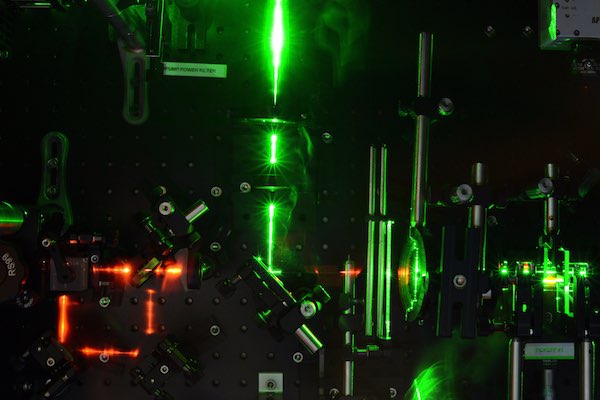
[Image above] Credit: MIT
Investigating how materials respond to irradiation is a difficult problem to tackle—such experiments take time and care to collect samples from radiation environments, and those precious samples then must be tested in special facilities.
That’s one reason why some groups use simulations to model irradiated materials instead of messing with the real thing. We saw just how valuable those modeling experiments can be last week, when I reported that a group of researchers used simulations to discover that irradiated materials are much more disordered than previously expected.
But, depending on the question you’re trying to answer, sometimes simulations just can’t cut it.
Say, for example, you want to measure how a material responds to radiation over time. Simulations may be able to provide some information, but eventually you’ll need actual sample measurements. But extracting and testing samples from a radiation environment is time-intensive and expensive and—most importantly—removes the sample from the very environment you want to test it in.
It would be much easier if there was a technique that could monitor how materials change in real time, from a distance. And thanks to scientists at MIT, that development is just on the horizon.
MIT scientists recently reported that transient grating spectroscopy can sensitively detect small imperfections in materials, opening new possibilities for monitoring irradiated materials in place in real time.
“What we’re working toward is a real-time diagnostic system that works under radiation conditions,” Michael Short, assistant professor of nuclear science and engineering at MIT and senior author of the new work, says in an MIT News story.
The spectroscopy technique uses pulsed laser beams—positioned to create interference that heats the sample surface—to generate and measure acoustic vibrations on the surface of materials to determine their thermal elastic properties.
And it all works without direct contact with the material itself.
According to a previous MIT News story about the team’s work, “Though the system only ‘sees’ the outer surface of the materials, those acoustic vibrations are affected by subsurface defects in the material’s structure. The effect is similar to the way geologists can construct a picture of Earth’s interior layers by studying the way seismic waves propagate in different directions.”

Experimental spectroscopy setup, with inset showing real-time display. Credit: MIT
The team’s earlier work used simulations to show that the technique was possible, but the new research shows that it actually works—the method can collect real measurements in a sample with high precision.
In addition to being used in operating radiation environments to prevent unnecessary preventative maintenance, the sensing technique also provides researchers with a quicker method of measuring damage evolution in irradiated materials—which is critical for testing new nuclear materials.
“There are a lot of groups working on more radiation-resistant alloys, but it’s a long process,” Short says in the MIT News story. “Instead, this allows you to make a lot of variations and test them as you go,” meaning that such research could be completed in weeks instead of years.
The open-access paper, published in Applied Physics Letters, is “Time-resolved, dual heterodyne phase collection transient grating spectroscopy” (DOI: 10.1063/1.4983716).
Author
April Gocha
CTT Categories
- Energy
- Environment
- Optics


